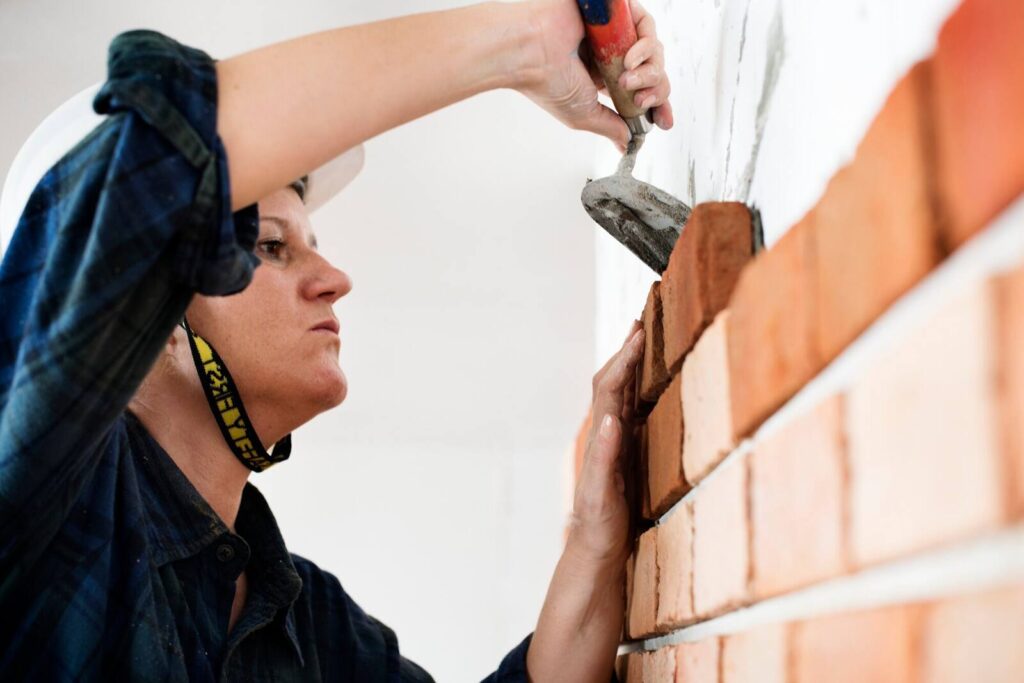Brick walls are known for their durability and timeless appeal, but even the strongest structures need maintenance over time. One of the most essential upkeep tasks for brickwork is repointing—replacing the deteriorating mortar between bricks to maintain structural integrity and aesthetics. If ignored, weakened mortar can lead to serious issues, from water damage to structural instability.
If you’re considering repointing bricks, it’s essential to know the warning signs that indicate your brickwork needs attention. Below are key signs that your brick wall requires repointing and when you should take action.
1. Crumbling or Eroding Mortar
One of the most obvious signs that your brick wall needs repointing is when the mortar starts to crumble or erode. Mortar naturally wears down over time due to exposure to weather, moisture, and temperature fluctuations.
If you notice gaps, flaking, or soft mortar that crumbles when touched, it’s a clear indication that repointing is necessary. Addressing this issue early can prevent further brickwork damage and save on more extensive repairs.
2. Visible Gaps Between Bricks
If the mortar between your bricks has started to recede, creating noticeable gaps, this is a strong indication that repointing is required. These gaps not only weaken the structure but also allow water to seep into the wall.
Over time, moisture penetration can lead to further deterioration, causing bricks to shift or loosen. Keeping an eye on these gaps and acting quickly can help maintain the stability of your brickwork.
3. Water Damage and Damp Patches
A properly maintained brick wall acts as a barrier against moisture, but deteriorating mortar can allow water to seep in. If you notice damp patches on your brickwork, discolored spots, or even signs of mold inside your home, it may be due to failing mortar.
Moisture intrusion can weaken the entire structure and lead to long-term issues like mold growth, making repointing a necessary step to prevent further damage.
4. Loose or Wobbly Bricks
Bricks should remain firmly in place, supported by strong mortar. If you notice that some bricks feel loose or shift when touched, this is a serious red flag. Weakened mortar fails to provide adequate support, increasing the risk of bricks falling out of place.
Loose bricks compromise the structural integrity of your wall and may lead to more significant repair costs if left untreated. Repointing ensures that bricks remain securely in position.
5. White, Powdery Residue on the Surface (Efflorescence)
Efflorescence, a white, chalky deposit that forms on bricks, is another indicator that repointing may be needed. While efflorescence itself isn’t harmful, it suggests that moisture is moving through the brickwork, dissolving salts within the materials.
This can be a sign that the mortar is no longer preventing water penetration effectively. Addressing this issue with repointing can help restore the wall’s ability to repel moisture.
6. Cracks in the Mortar Joints
Fine hairline cracks in the mortar joints may seem minor at first, but they can quickly develop into larger gaps that weaken the entire structure. Cracks allow moisture and even pests to infiltrate the brickwork, accelerating decay.
If left unattended, these cracks can grow, leading to more extensive damage. Regular inspections and timely repointing can prevent these minor cracks from becoming a major problem.
7. Structural Instability and Leaning Walls
In extreme cases, failing mortar can cause a brick wall to lose its stability. If you notice sections of your wall bowing, leaning, or showing signs of movement, immediate repointing and possibly additional structural reinforcement may be required.
A leaning wall poses serious safety risks and could indicate deeper structural issues. Acting quickly can prevent costly restoration work or even the need for a complete rebuild.
When to Act
The best time to repoint a brick wall is as soon as you notice any of these warning signs. Regular inspections, especially after harsh weather conditions, can help detect early signs of mortar deterioration. If you’re unsure about the extent of damage, consulting a professional can provide clarity on whether repointing is necessary.
Addressing the issue sooner rather than later not only preserves the longevity of your brick wall but also helps avoid more expensive repairs in the future.
Conclusion
Repointing is an essential part of maintaining the strength and appearance of your brick wall. By recognizing the early warning signs such as crumbling mortar, visible gaps, water damage, loose bricks, or cracks, you can take proactive steps to prevent serious structural problems.
Whether it’s a minor touch-up or a full repointing job, timely action will ensure your brickwork remains strong and aesthetically pleasing for years to come. If you suspect your brick wall needs repointing, don’t delay—taking care of the issue now can save you from costly repairs down the road.

